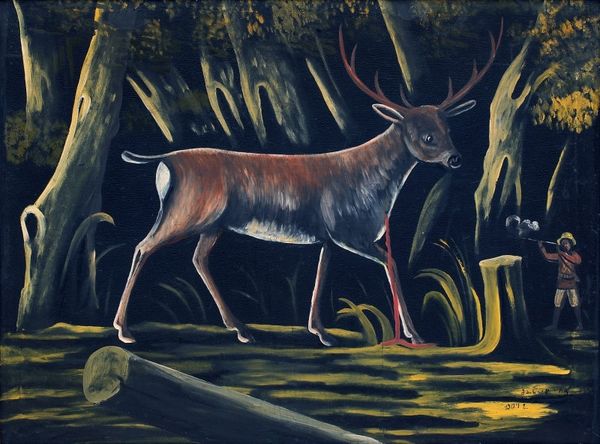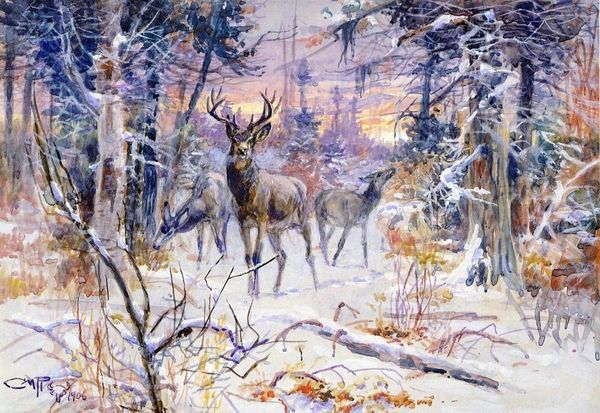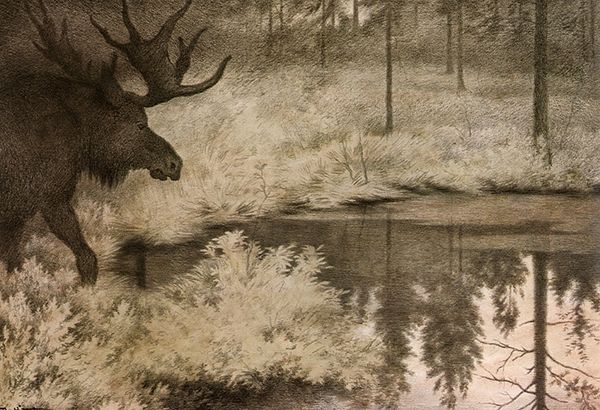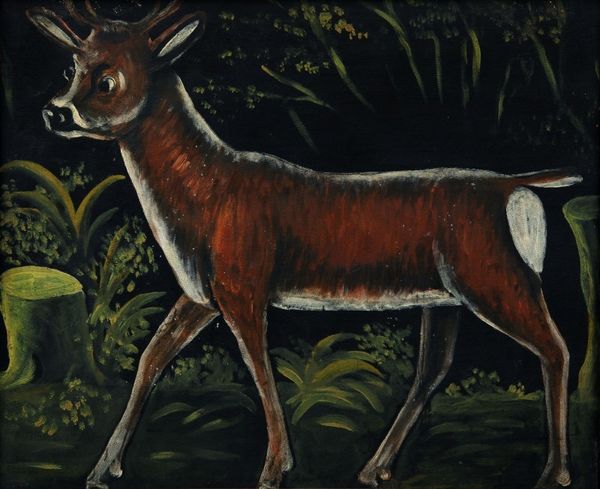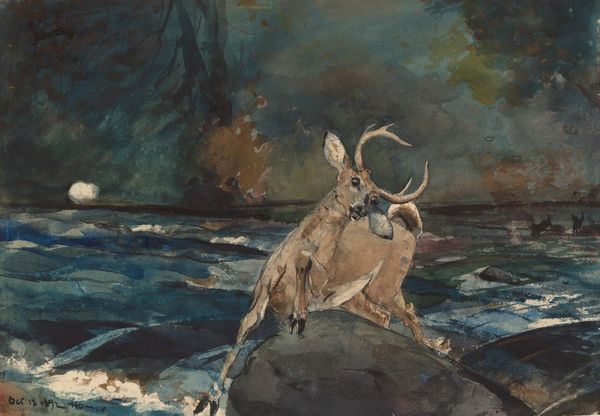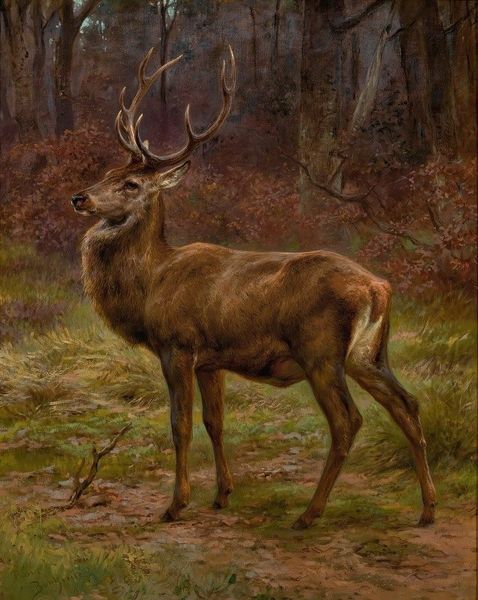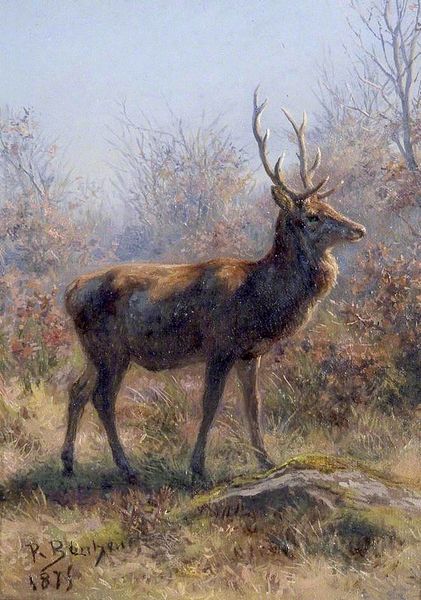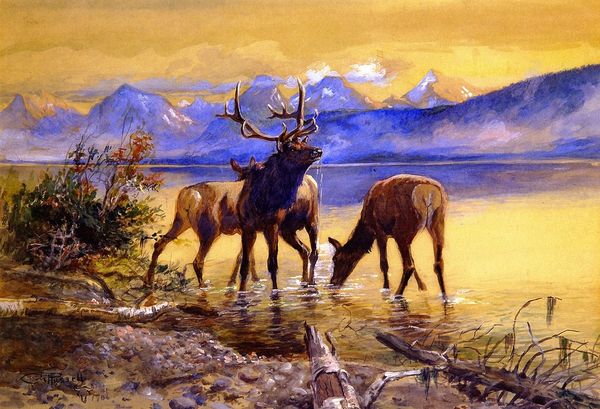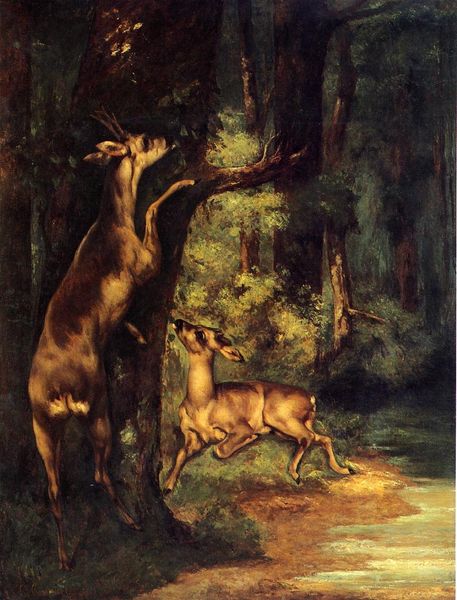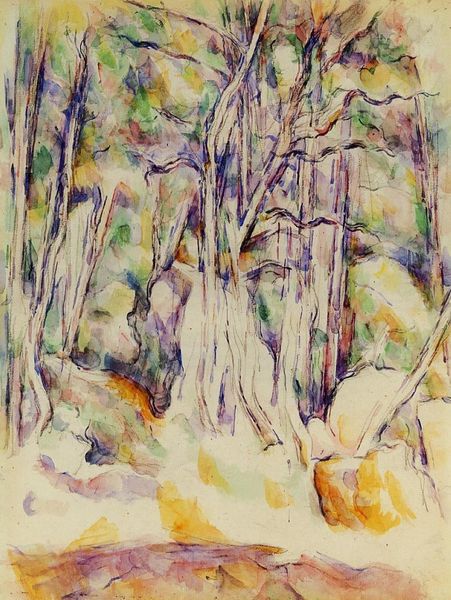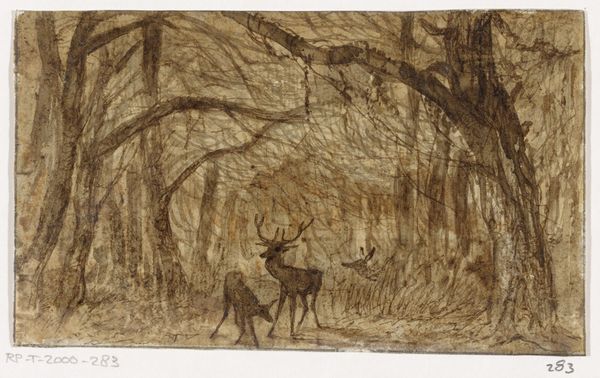
watercolor
#
landscape
#
figuration
#
oil painting
#
watercolor
#
realism
Copyright: Public domain
Curator: Before us we have Charles M. Russell's watercolor from 1909, "Deer in the Dell". What’s your initial reaction to it? Editor: The first thing that strikes me is how muted and ethereal it is. The colour palette lends an otherworldly glow to this forest scene; I can almost smell the damp earth. Curator: Russell worked as a cowboy for many years, but became celebrated for paintings and sculptures that depicted scenes from the American West, with cowboys, Native Americans, and wildlife—and that were informed by first-hand observation. Editor: Yes, and it’s interesting how that perspective influences not only the subject but the artistic approach. Consider his choice of watercolor. The transparent medium allows him to capture this scene’s temporality. We’re observing a moment that will quickly fade. Curator: Right. Watercolors were quite portable and cost-effective for working outdoors, but there's also Russell’s role in shaping and preserving an idealised vision of the West in response to changes occurring around him through settlement and industrial development. He’s marketing an idea as much as rendering a landscape. Editor: Absolutely. How the image circulates – postcards, prints, calendars - influences how the West is consumed as an aesthetic and historical product, contributing to mythologies around the frontier and conquest. Even this work, created using paper, pigment, and water, participates in a broader economic narrative that includes resource extraction. Curator: Exactly. Russell consciously curated the imagery, presenting a narrative rooted in nostalgia and tradition, and it became intertwined with popular understandings of American identity. And beyond subject and context, his deft technique elevated it, legitimizing the narratives it conveyed. Editor: It underscores how art both shapes and is shaped by these forces. From the pigments he used, to its reproduction, Russell's vision became woven into the very fabric of Western identity. Looking closer does spark broader questions about cultural production. Curator: It does indeed give us a rich understanding of art as a shaper of identity and perception, something much broader than simple representation. Editor: And it all started with humble watercolor pigments mixed into water. I'll never look at the American West the same way again!
Comments
No comments
Be the first to comment and join the conversation on the ultimate creative platform.
